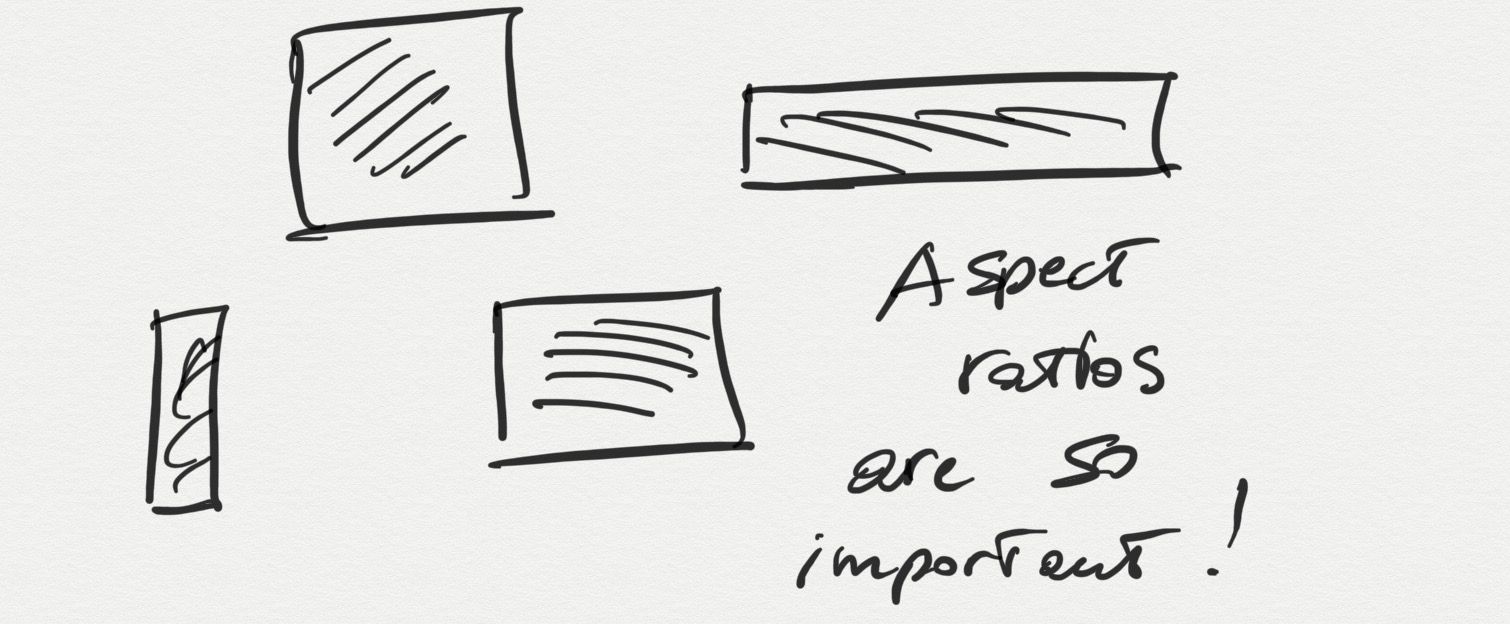The aspect ratio is one of the fundamental concepts you really need to understand, it’s not rocket science, yet you’d be surprised to see how many people in the photography business are not familiar with it.
It’s a term used to describe the proportional relationship between the width and the height of an image and it has nothing to do with the total number of pixels representing the image or the sensor’s size.
The following picture shows some of the typical aspect ratios, where 3:2 (3/2=1.5) is the aspect ratio of a full frame camera sensor.
The actual measurement unit (mm, inches, pixels, etc) is totally irrelevant, it’s just a ratio. If you, for example, take any of these different dimensions 3:2, 6:4, 12:8, 24:16, 48:32, 96:64….., they all give you the very same aspect ratio of 3:2 (or 1.5), no matter if these numbers represent pixels, mm, inches or any other unit.
Example 1: The Sony A7RIII has a full frame sensor (36x24mm) with 7952 x 5304 pixels = 42177408 pixels (roughly 42Megapixels).
Example 2: The Sony A7R has a full frame sensor (36x24mm) with 7360 x 4912 pixels = 3585760 pixels (roughly 36Megapixels).
Example 3: The Nikon D750 has a full frame sensor (36x24mm) with 6016 x 4016 pixels = 24160256 pixels (roughly 24Megapixels).
Example 4: The Nikon D3500 has a DX sensor (23.5 x 15.6 mm) with 6000 x 4000 pixels = 24000000 pixels (24Megapixels).
The four camera sensors in the examples above share the very same aspect ratio of 3:2 (or 1.5) despite having different sensor sizes and/or total pixel count.
36:24 = 23.5:15.6 = 3:2 = 1.5
7952 : 5304 = 7360 : 4912 = 6016 : 4016 = 6000 : 4000 = 3:2 = 1.5
Why is aspect ratio so important?
Because our images are often used in a vary specific layout, which requires a specific aspect ratio. And it is your job, as a photographer, to compose your frame in such way that your image will fit the requested layout.
Your client is supposed to know what aspect ratio they require, but sometimes they don’t and you’ll have to help them figure it out before the shoot. Ask them how and where they are going to use the images and see if there are aspect ratios that are optimal for that specific case. For example, if you’re shooting products that will end up on a specific e-commerce site, there are most likely technical requirements that your images will have to meet in order to be used on that platform and you can easily find them online. You need to help your client figure out what the requirements are.
If your client clearly states the aspect ratio is not important, please make sure they realize you will not take any responsibility for layout related issues that could possibly make your images unusable. Be overly clear abut this and get it in writing so it will make it harder for them to blame the issue on you.
I’d love to hear your thoughts. Please share your experience with the community by commenting down below. If you enjoyed this information, please share it on your own channels.
Thank You and Happy Shooting!

